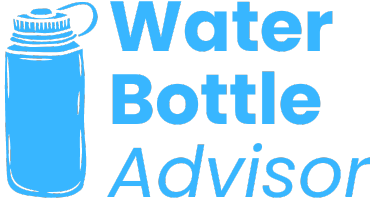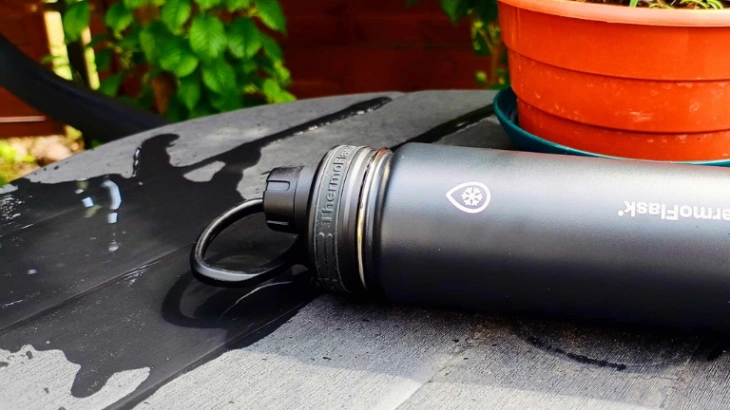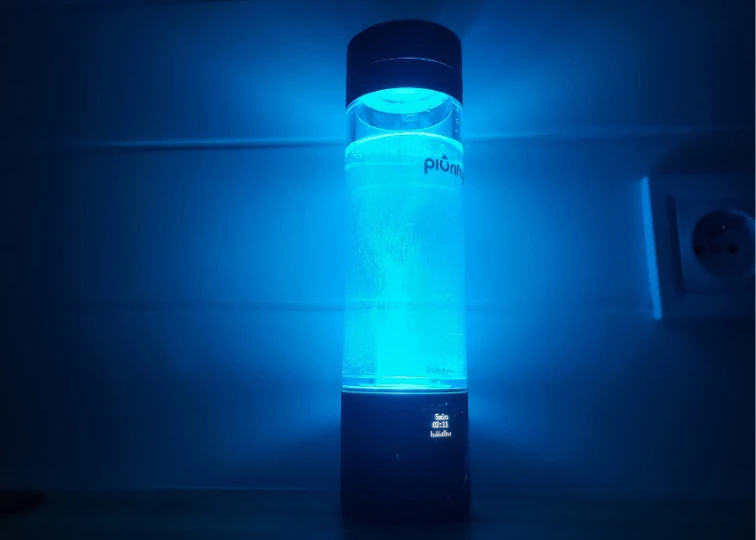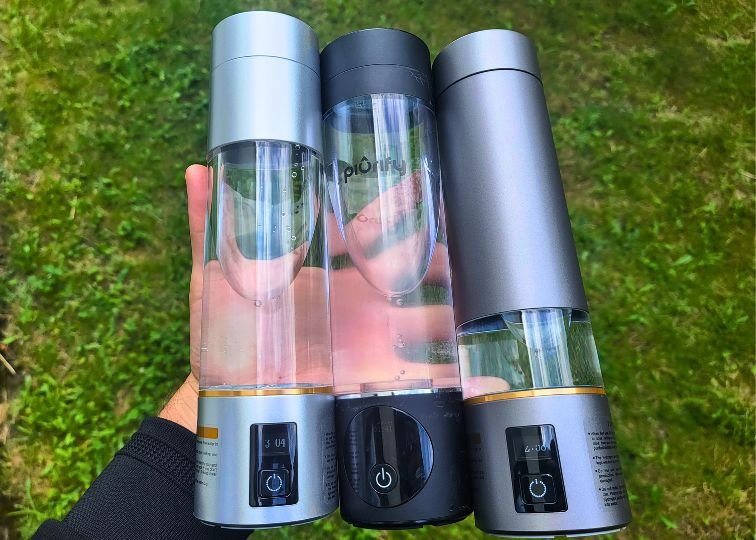If you’ve been on the hunt for a water bottle that won’t dribble all over your stuff, you’ve probably noticed a trend. Everywhere you look, bottles are boasting “100% leakproof” guarantees.
While so many brands promise leakproof designs, the reality can be as fluid as the water within. Some bottles start out tight but develop a drip after a few weeks. Others might surprise you with a puddle right out of the gate.
This can be frustrating. You invest your trust (and cash) hoping to dodge leakage, only to wind up mopping up messes. It can really make you doubt the promises you hear.
That’s why in this guide, I’ve listed only the best leakproof water bottles. These are bottles that keep my water confined through it all, except when I goof up and don’t secure the lid right.
What Water Bottles Don’t Leak?
Best Overall: YETI Rambler | 36 oz. Version | 26 oz. Version | 18 oz. Version
2nd Place: Owala FreeSip | 40 oz. Version | 32 oz. Version | 24 oz. Version
3rd Place: Hydro Flask Lightweight | 40 oz. Version | 32 oz. Version
4th Place: YETI Yonder | 50 oz. Version | 34 oz. Version | 25 oz. Version | 20 oz. Version
YETI Rambler

KEY FEATURES
PROS
CONS
The YETI Rambler has built quite the reputation for being tough as nails, but what really caught my attention was its promise of being completely leakproof.
I’ve been putting this bottle through the wringer for the past three years, and I came to conclusion that it’s one of those rare bottles that lives up to the hype.
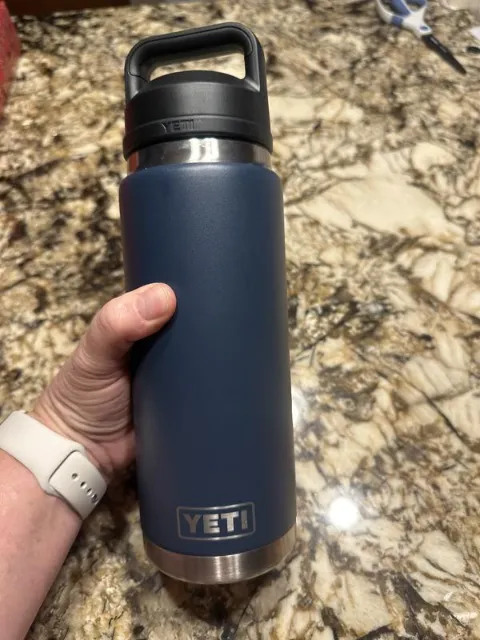
Key Features
One of the standout features has got to be its robustness. Whether it’s been dropped, tossed into the back of the truck, or even just rolling around on the floorboard, this bottle has come out unscathed every time.
The carrying handle on the lid isn’t just for show either. It makes moving this tank around a breeze without any dramatic clanging and banging.

Cleaning or filling up is very easy too. Just pop off the chug cap, and you’re greeted by a wide mouth that’s also dishwasher safe.
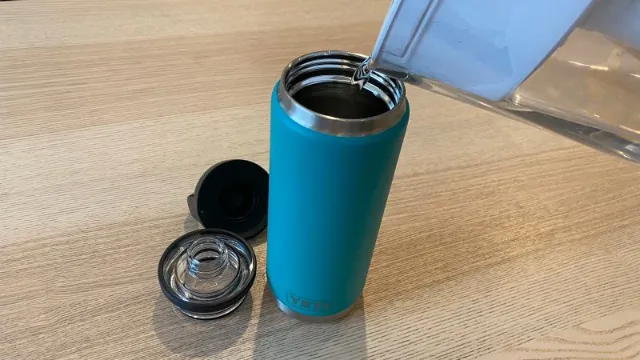
Insulation
The Rambler keeps ice frozen for over a day, even when you’re out in the summer heat. It’s impressive, to say the least.
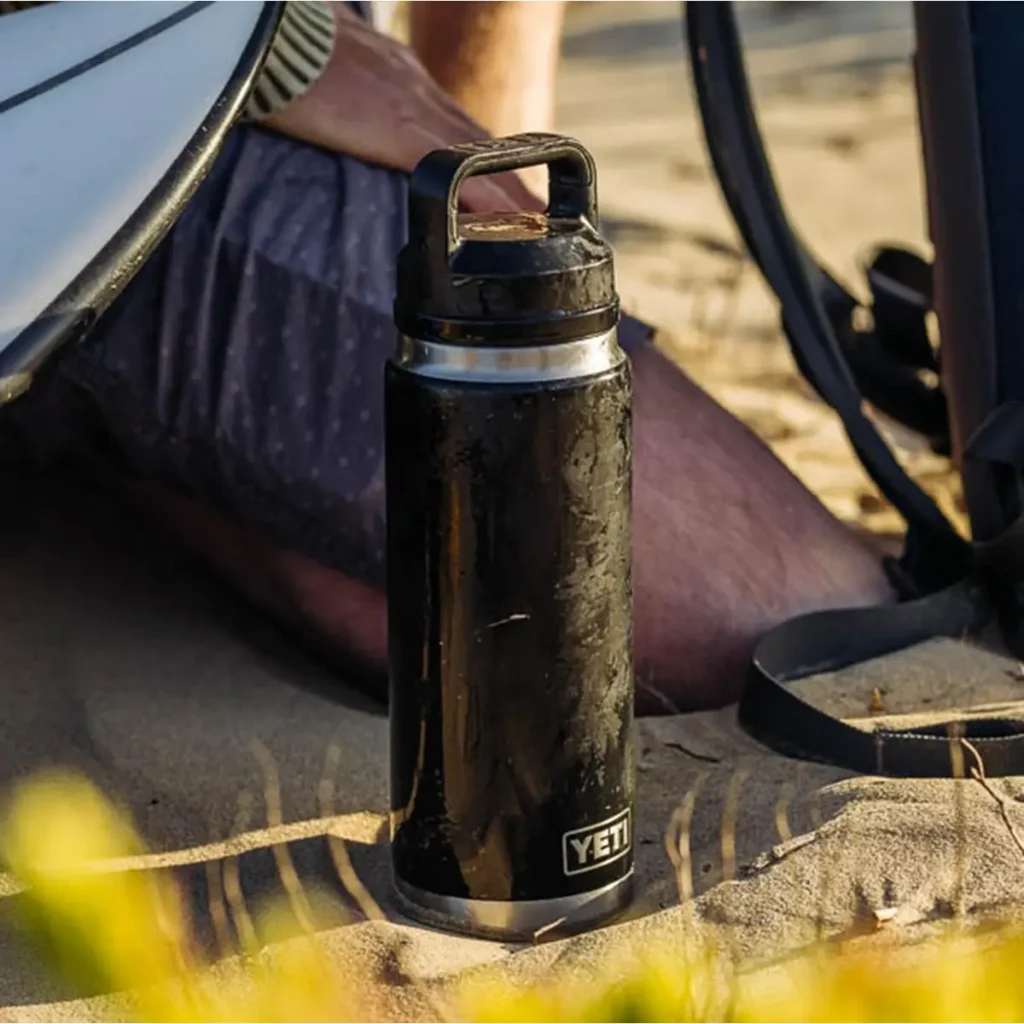
While it’s stellar at keeping drinks cold for days, hot beverages don’t fare as well overnight, though they stay hot enough for a solid four hours.
Potential Pitfalls
This bottle is on the heavier side, tipping the scales between 1 lb. and 1 lb. 8.5 oz., depending on the size you choose. It’s also not the kindest on your wallet.
But, if you’re in the market for a water bottle that can withstand just about anything life throws at it and keep your drinks at the right temperature, this could very well be the last water bottle you’ll need to buy.
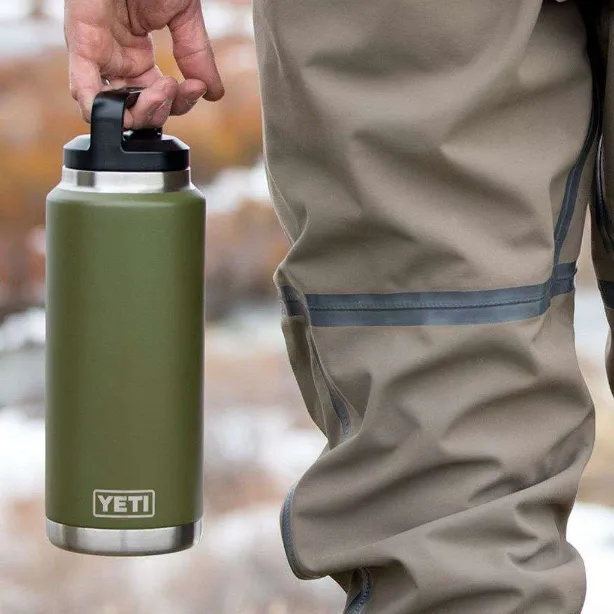
Verdict
The YETI Rambler with chug cap is for anyone who values reliability, durability, and the peace of mind that comes with knowing your belongings won’t get soaked.
It’s the most leakproof water bottle I’ve owned, and it’s a worthy investment for a lifetime of adventures.
Owala FreeSip
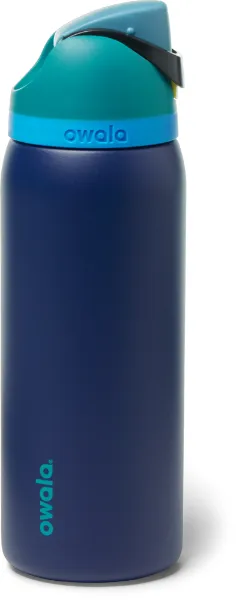
KEY FEATURES
PROS
CONS
The first thing you should know about the Owala FreeSip is its remarkable ability to resist leaks. Whether it found itself knocked over, shaken, or sliding around in the backseat of my car, the seal didn’t budge.
The design includes a clever button at the front that releases the spout lid, but what really seals the deal (pun intended) is the carrying loop.
When you flip it over, it covers the button, making accidental spills virtually impossible. I even did the upside-down test and, you guessed it, not a single drip.
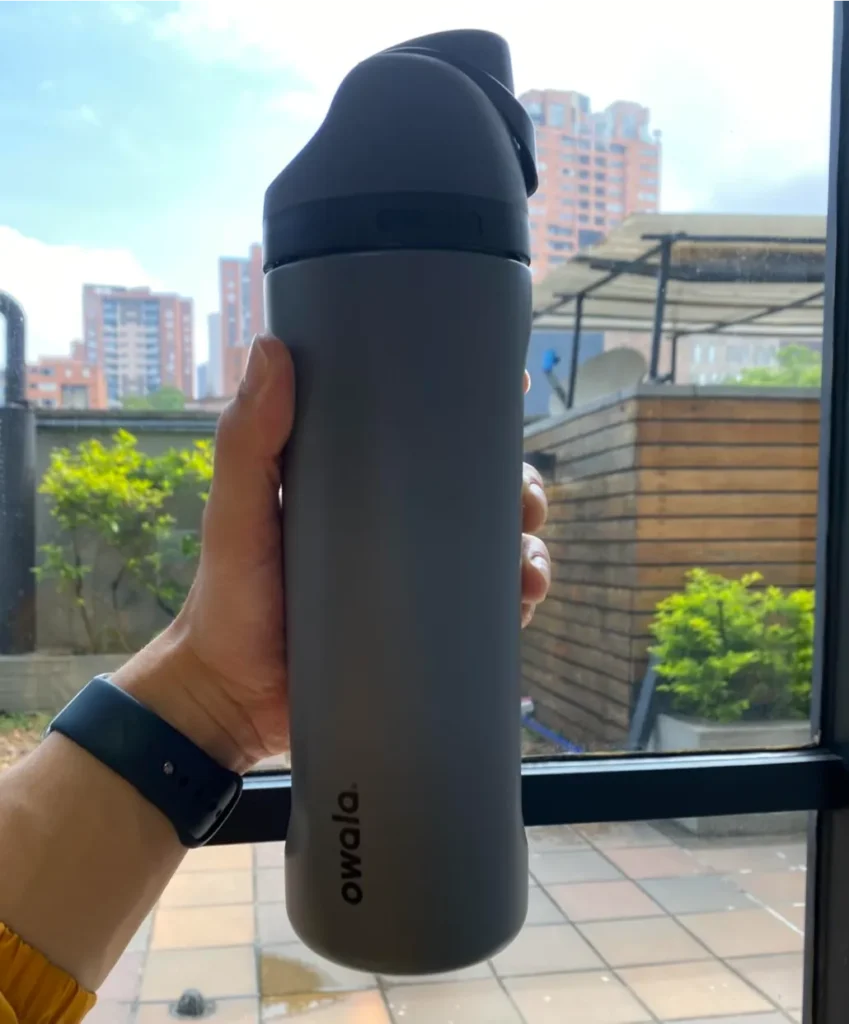
Key Features
What sets the Owala FreeSip apart for me is the dual drinking options. You can sip through the spout like a straw or tilt and gulp for more hydration.
Drinking from it requires minimal effort, giving you a smooth stream of water that feels tailor-made for your lips.

The bottle’s design is another win. It’s slim, easy to hold, and the flat sides offer a secure grip.
The lid is a breeze to snap open and shut with just a push of a button, and the fold-down carrying handle is just plain smart design, especially for travelers.
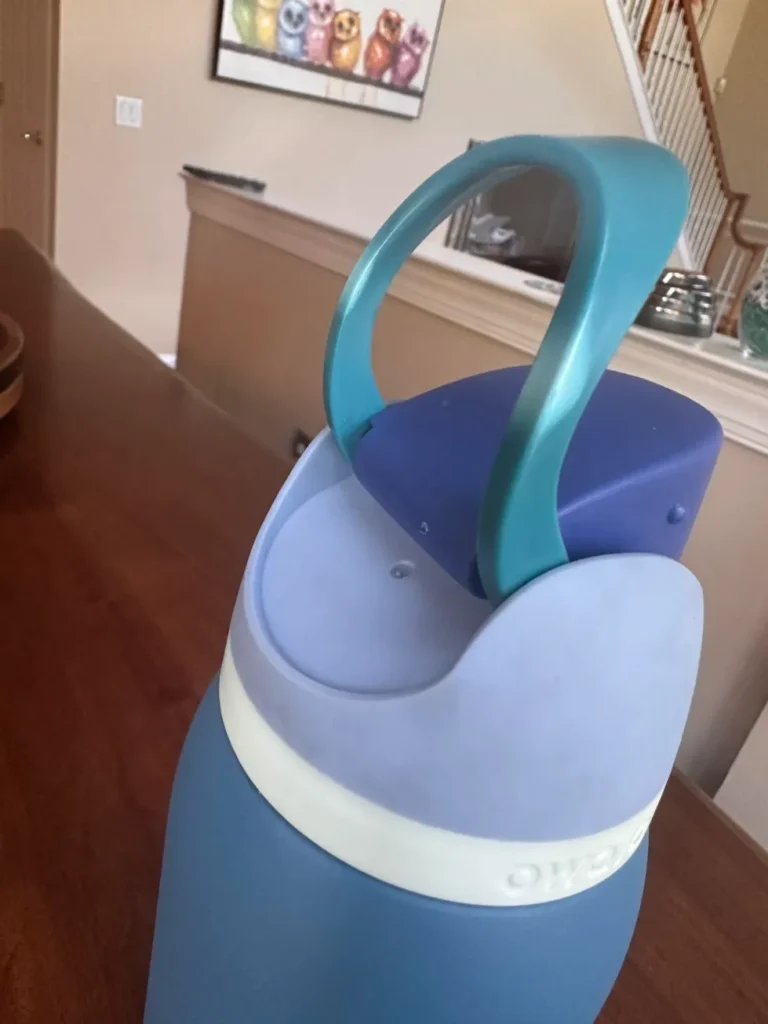
Insulation
Thanks to its triple-layer, vacuum-insulated stainless steel body, your drinks stay icy up to 24 hours. It’s like having a mini fridge on-the-go.
However, the FreeSip is best suited for cold and room-temperature beverages due to the potential pressure build-up with hot liquids.
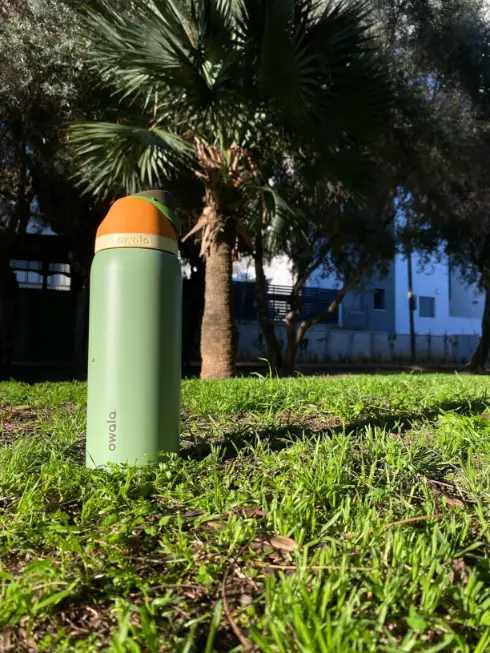
Potential Pitfalls
While the Owala FreeSip scores high on many fronts, its limitation to cold drinks might be a drawback for those looking for an all-rounder bottle. And at $33-$40, it’s not the cheapest option out there.
Verdict
The Owala FreeSip is a top-notch pick for anyone in search of a reliable, leakproof water bottle. Its innovative drinking spout, ergonomic design, and superior insulation make it worth every penny.
You’re investing in a product that stands the test of time, backed by a lifetime warranty against manufacturer defects.
Hydro Flask Lightweight
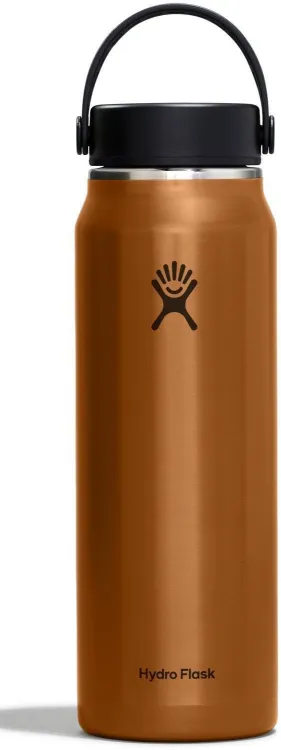
KEY FEATURES
PROS
CONS
The Hydro Flask Lightweight caught my eye because of its promise of being a lighter version of the classic. Weighing in at just 12 ounces, it’s designed for those of us who love the outdoors but don’t want to be weighed down.
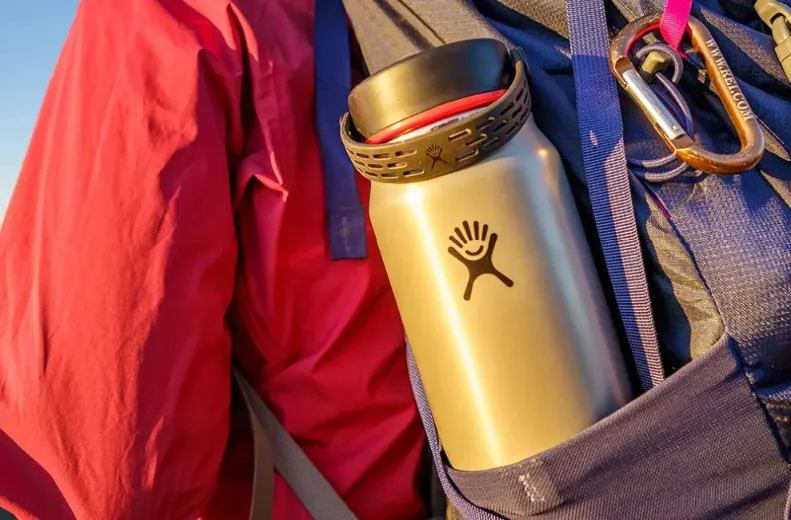
Key Features
What stands out about this bottle, apart from its feather-light feel, is the Honeycomb-insulated wide-mouth cap. This thing is built to be leakproof, and, in my experience, it lives up to that promise.

I’ve tossed this bottle into my backpack alongside my laptop and books without a second thought, and not once has it betrayed me with a leak. Although, I’ll admit, when I get a bit eager and twist off the cap, a few droplets might make a break for it, but never a leak per se.
The cap also comes with a handy flexible strap, making it easy to carry or hook onto something while on the move.
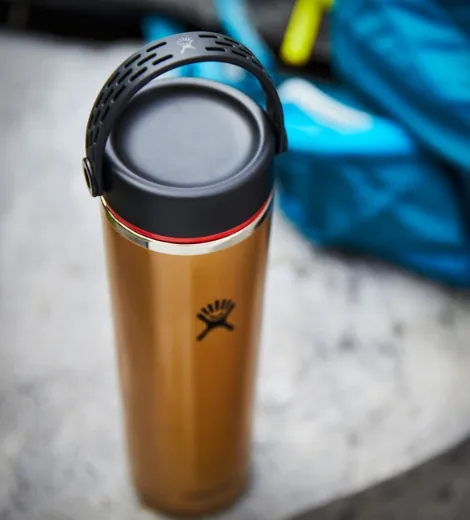
Durability is another high point. Despite its slimmed-down design, the tapered walls are thickened at the bottom, offering a solid base that can take a tumble without worry.
You also won’t find any lingering flavors here, thanks to its stainless steel construction. However, if you’re a coffee drinker like me, you might catch a hint of yesterday’s brew from the cap, which isn’t stainless steel.
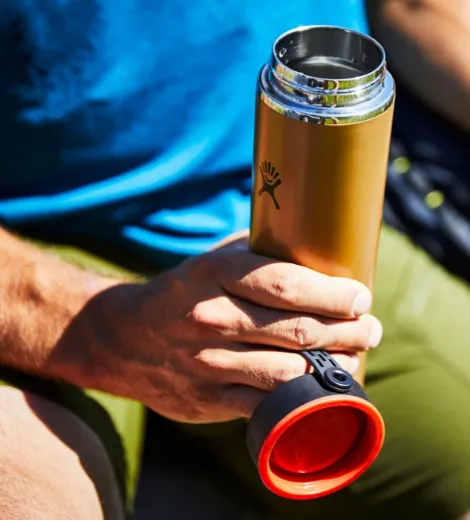
Insulation
Another feature that grabbed my attention is its insulation capability. Hydro Flask claims this lightweight model keeps cold drinks icy for 24 hours and hot drinks steamy for 12 hours.
From my adventures, I can vouch for that claim. It’s easily one of the best-insulated bottles I’ve owned.
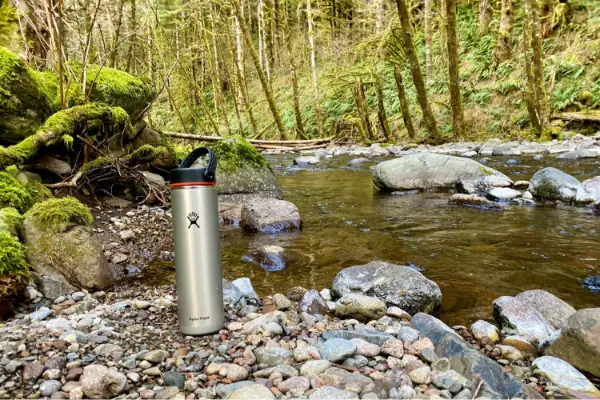
Potential Pitfalls
The price point is a bit steep at $49.95 – $54.95, especially when compared to similar bottles like the Owala FreeSip priced around $33. And, like many larger bottles, finding a cup holder it fits into can be a bit of a quest!
Verdict
The Hydro Flask Lightweight is a stellar choice if you prioritize insulation and durability without the added weight.
The insulation blows most competitors out of the water, though you might pay a bit more upfront for that.
YETI Yonder
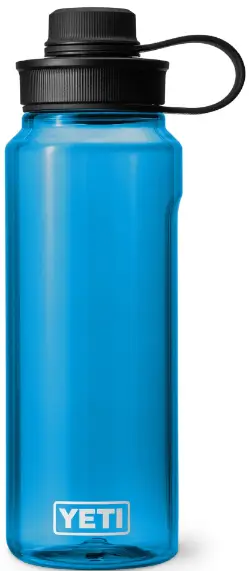
KEY FEATURES
PROS
CONS
YETI Yonder is the newest addition to the YETI family that’s been turning heads for a few good reasons.
It breaks from the pack by being a transparent, non-insulated plastic water bottle. The big deal here? It’s a featherweight champion in the YETI lineup, coming in at 50% lighter than the insulated Rambler bottles we’ve all come to know.
It’s clear YETI is venturing into new territory with this one.
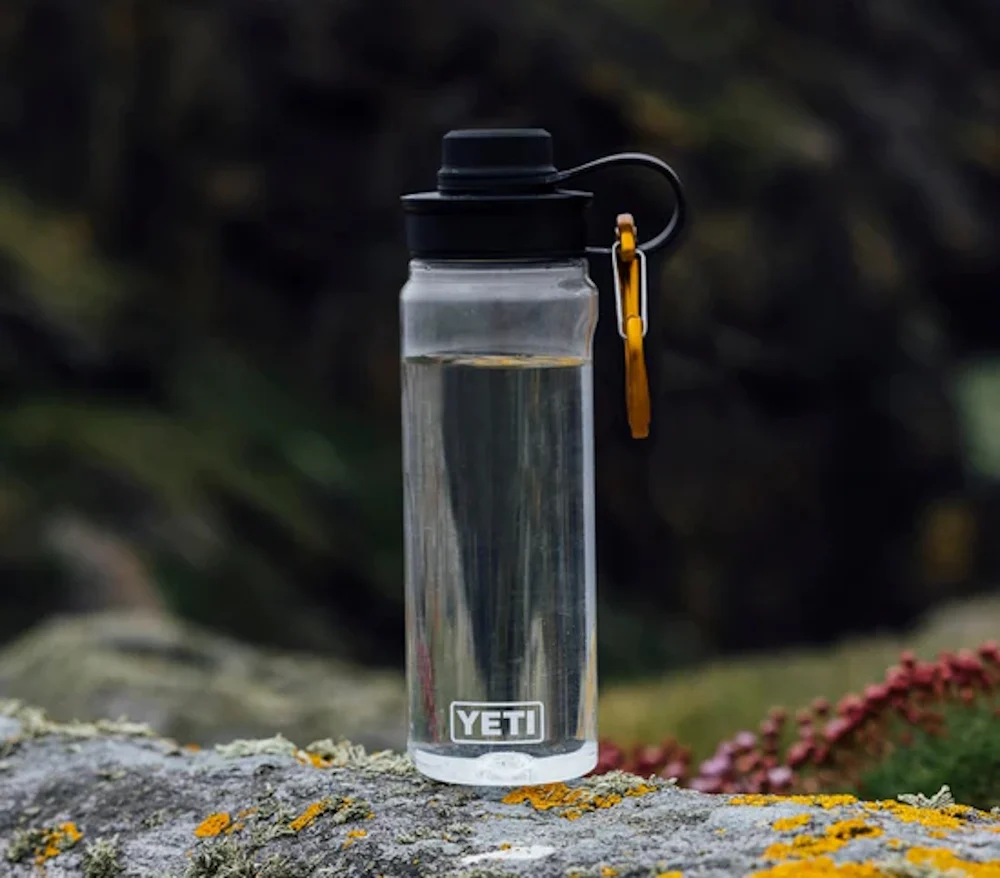
Key Features
Right out of the gate, the Yonder Tether Cap catches your attention. It’s designed to be 100% leakproof and features an ultra-strong leash that keeps the cap always attached. No more losing your cap or worrying about spills in your bag.
The cap design is clever, allowing for total unscrewing for a thorough clean or a quick refill, and the spout itself is perfect for a hassle-free drink – no shirt-soaking required.
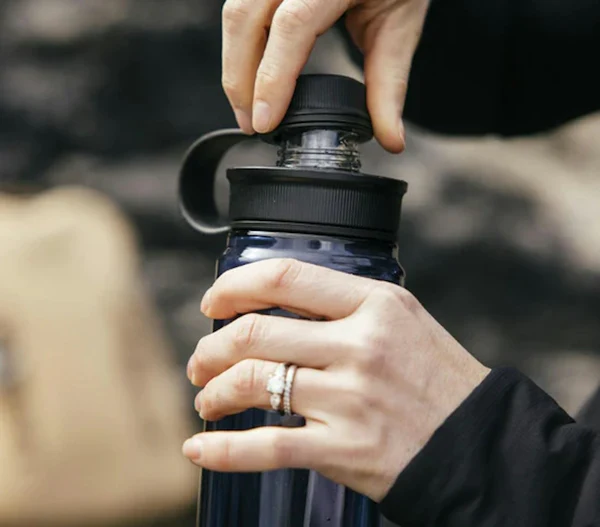
Insulation
Now, while the Yonder excels at carrying water without any spillage, it’s worth noting that it doesn’t offer any insulation. This means your beverages won’t stay hot or cold, which might be a drawback if you’re looking for temperature retention in your hydration gear.
But, if simplicity and lightweight are your goals, this might not bother you too much.
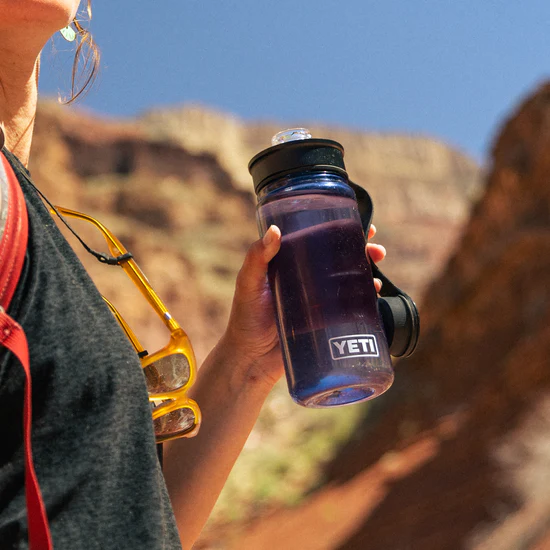
Potential Pitfalls
The lack of insulation limits the Yonder to cold, uncarbonated drinks, which narrows down its versatility.
And then there’s the price of $22-$30. Yes, it’s a premium for a plastic bottle, but that’s YETI for you – quality and durability come at a cost.
Another point to consider is sustainability. The Yonder uses 50% recycled plastic, which is great, and it’s 100% BPA-free. However, I’d love to see YETI push the envelope towards fully recycled and recyclable materials for an even greener footprint.
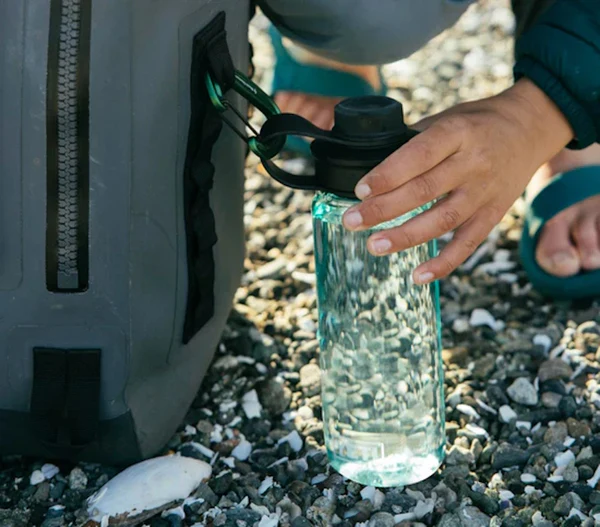
Verdict
All in all, the YETI Yonder is a solid choice if you’re looking for a lightweight, leakproof water bottle for your adventures.
Its ease of use, cleaning convenience, and the confidence of knowing it won’t leak are big pluses.
While it might not keep your drinks warm or cold, and the price tag is a bit steep for a plastic bottle, its durability and the YETI brand assurance might just make it worth the investment for many.
Why Do So Many Water Bottles Leak?
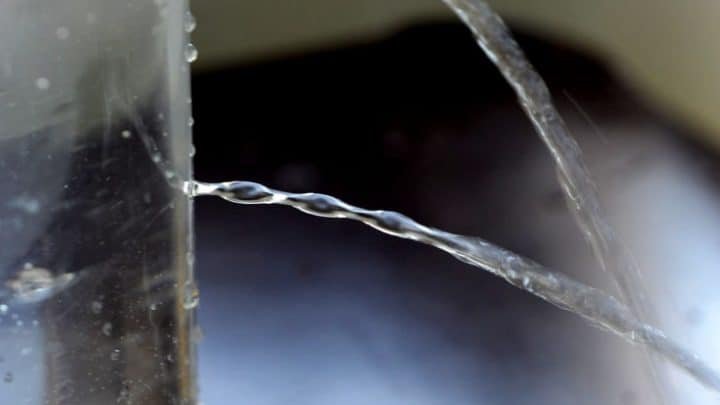
It’s all about the seal. Many water bottles come with caps that are supposed to be tight-fitting, but here’s the catch – not all of them live up to the promise.
Whether it’s a screw cap, a flip-top, or a straw, if the seal isn’t perfect, you’re going to get leaks.
Sometimes, the materials used just can’t hold up against the pressure of the liquid inside, especially if the bottle is squeezed, dropped, or jostled around in your bag.
Wear and Tear
Then, there’s the issue of wear and tear. Over time, even the sturdiest water bottle will show signs of aging. The threads on screw caps can wear down, gaskets and o-rings can lose their elasticity, and little cracks can form without you even noticing.
Each of these can turn a once reliable bottle into a leaky mess.
Design Plays a Huge Part
Some bottles are just designed better than others. For example, those with fewer parts and simpler mechanisms tend to have fewer problems with leaks.
It’s like the difference between a sturdy, old-school flip phone and the latest smartphone. More features might seem better, but they also mean more potential for something to go wrong.
Manufacturing flaws can also sneak into the mix. Even the best brands out there can have a bad batch with slight imperfections that lead to leaks. And because it’s tough to spot these issues at a glance, you might not realize you’ve got a faulty bottle until it’s too late.
Can You Fix a Leaking Water Bottle?
Absolutely, fixing a leaking water bottle is often possible, especially if the issue is with the cap or seal.
First, identify where the leak is coming from. Is it the cap? The body? Around the seal? Knowing the source of your problem is half the battle.
If the leak is from the cap or the area where the cap screws on, you might be in luck. Sometimes, all it takes is a good cleaning. Gunk can build up in the threads or under the seal, preventing a tight close. Give it a thorough wash and see if that stops the leak.
If cleaning doesn’t do the trick, take a closer look at the seal or gasket – that’s the rubbery ring under the cap. If it looks worn out or damaged, you might just need a replacement. Many brands sell replacement seals, and they’re usually not too expensive.
But what if the body of the bottle itself has a crack or hole? That’s a tougher fix. For plastic bottles, some folks swear by melting the plastic with a soldering iron to seal the crack. But, be cautious – this can be risky and might not always work. Plus, it could make the bottle unsafe for drinking if not done correctly.
For metal bottles, a small hole might be patched with waterproof, food-safe epoxy. But again, this is more of a temporary fix.
The truth is, if the bottle’s body is compromised, you might be better off getting a new one, especially if you’re worried about leaks getting your stuff wet or, worse, bacteria growing in hard-to-clean spots.
Conclusion
You’ve probably already noticed how difficult it is to find a bottle that lives up to its promises. But does this mean we should give up on finding a leakproof water bottle? Absolutely not!
It’s about knowing what to look for and understanding that sometimes, you might need to do a bit of trial and error before you find the perfect one.
Look for bottles with high-quality seals, simple designs, and warranties that show the company stands behind their product.

Jeremiah Kowalski
Hey there! I’m Jeremiah, the guy behind WaterBottleAdvisor.com. I used to have a bad habit of guzzling sodas while working remotely, but thanks to reusable water bottles, I’ve turned my hydration game around. After testing over 50 bottles, I’m here to help you find the perfect one to make staying hydrated a joy, not a chore. When I’m not reviewing bottles, you’ll likely find me scaling steep trails around the world, trusty water bottle in hand.
